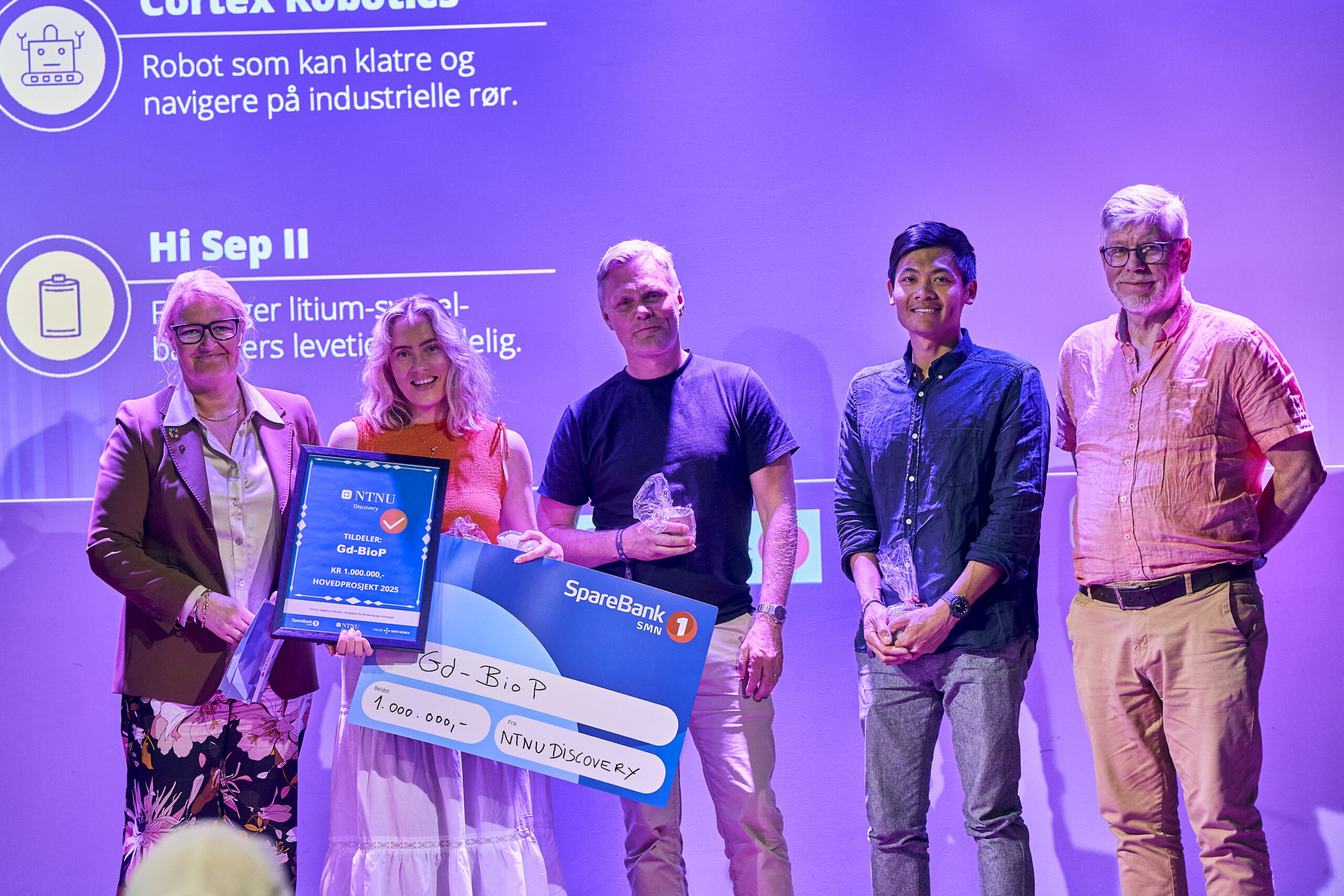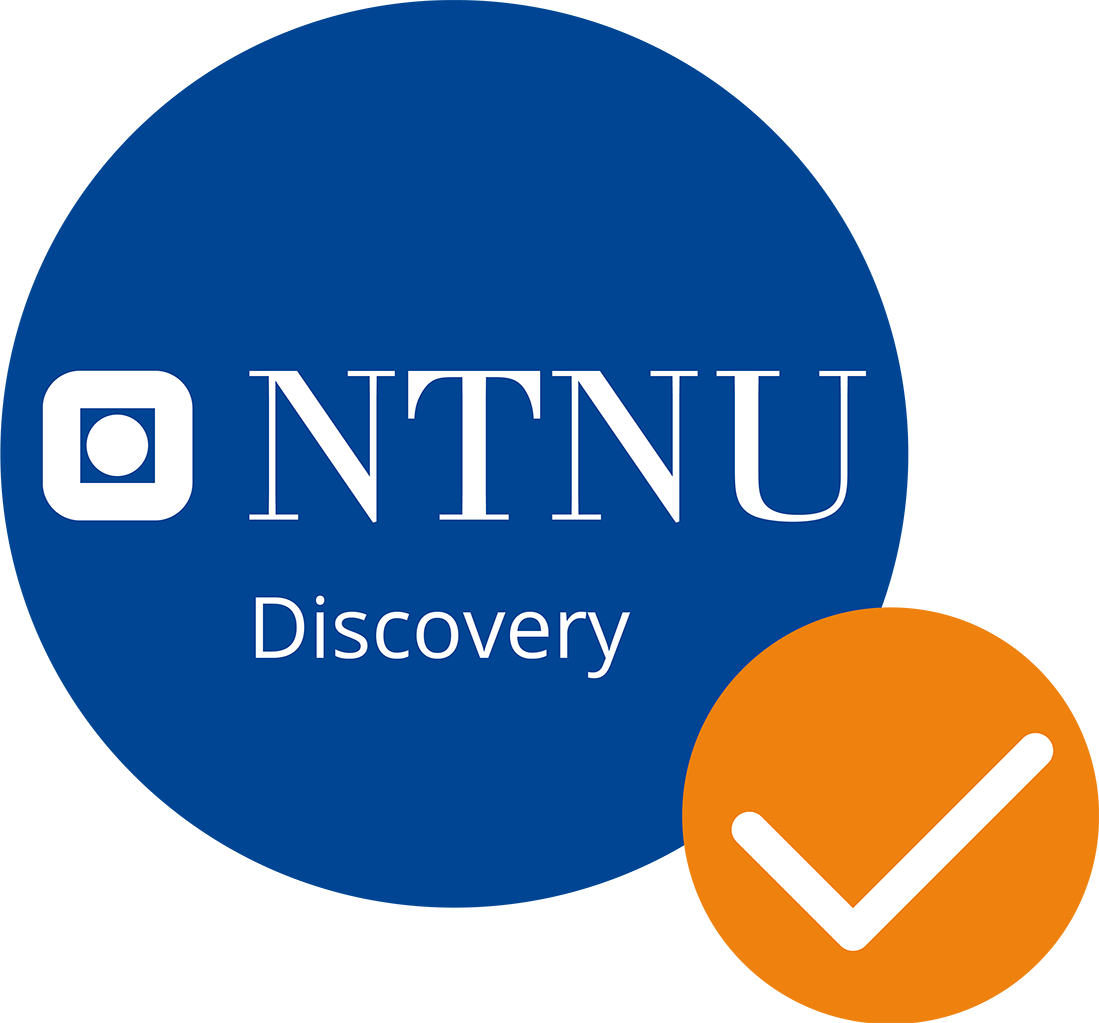
New millions for staff and students
Faster insulin absorption. A climbing robot that inspects massive industrial piping systems. Next-generation lithium batteries with up to five times greater capacity.
These were some of the potentially groundbreaking projects that were awarded main project funding from NTNU Discovery during the Tech, Hugs and Rock’n’Roll event at Digs on Thursday, June 5.
Text: Per Steinar Moen
Photo: Kristoffer Wittrup
Toril A. Nagelhus Hernes, Pro-Rector for Innovation, had the pleasure of awarding a total of NOK 4.3 million to five projects led by employees and students affiliated with NTNU and Helse Midt-Norge.
“This funding supports projects at a very early stage—when no one else dares to invest. Since 2011, we’ve awarded more than NOK 140 million to over 400 projects, and we’re actually quite proud of that,” says Hernes.
In total, NTNU Discovery projects have led to the establishment of more than 100 companies with a turnover of around NOK 2 billion. “This suggests that the companies have considerable potential. And that’s also what the jury that has evaluated all the applications says,” she says before awarding new millions.

Toril A. Nagelhus Hernes, pro-rector for innovation, awards project funding.
Better everyday life for diabetes patients
Nano Glucagon is the name of one of the projects that was awarded NOK 1 million. Behind the project is an interdisciplinary research team at NTNU and St. Olavs Hospital. Hilde Kjelstad Berg is a business developer in the project from NTNU TTO:
“This is a perfect example of what can be achieved in Trondheim. We have a mix of the technical environments at Gløshaugen and the clinical environments at St. Olavs hospital, and together they can achieve very good things,” she says.

Hilde Kjestad Berg presents Nano Glucagon to an interested audience.
Despite tremendous development in recent decades with new technology and drugs, there are no systems that handle medication automatically without user intervention. This is because insulin is absorbed too slowly. The researchers’ discovery is that nanodosing of glucagon provides local blood flow and thus faster absorption of insulin. Faster uptake of insulin will mean that blood sugar can be regulated more quickly and perhaps also with the help of automatic systems.
It’s about making everyday life much better for patients with diabetes,” she says. The goal now is to commercialize the research in collaboration with players in the pharmaceutical and medical technology industries.
“We’ve spoken to all the players in the market and the response is the same: This is really exciting, but one thing they ask for is clinical data. That’s why we’ve applied to NTNU Discovery for funding to run a clinical study to collect clinical data,” she says.
These projects were awarded main project funding from NTNU Discovery:
Cortex Robotics – NOK 300,000
Cortex Robotics is developing a robot that can climb and navigate around the outside of industrial pipes. This technology will make inspection and maintenance of these pipes safer, cheaper and more data-driven. Developed by students at the Department of Mechanical Engineering and Production, and the Department of Industrial Economics and Technology Management:
Daniel Kjøle Skogland
Kristian Romen
Celine Rønquist Slåttelia
Hi Sep II – NOK 1,000,000
Lithium-sulphur batteries can transform energy storage, but they degrade too quickly. HiSep-II’s smart filter significantly extends battery life, enabling lighter, cheaper and longer-lasting energy solutions. Developed by researchers at the Department of Chemical Process Technology and TTO:
Önder Tekinalp
Arne Lindbråthen
Kristina Nydal
Gd-BioP – NOK 1,000,000
Traditional contrast agents make it easier to see inside the body using diagnostic imaging, but can cause unwanted side effects. The new Gd-BioP system has been developed as a safer and more precise alternative, with targeted image contrast and thus higher efficiency. Developed by staff at St. Olavs Hospital, the Department of Biotechnology and Food Science and TTO:
Elise Borgen Holmås
Bjørn E. Christensen
Jin Han Gaute Brede
Type 11 – NOK 1,000,000
The project aims to develop a gene therapy to treat patients with clinical retinitis pigmentosa type 11, a rare genetic disorder of the retina. The project will commercialize a gene therapy product that will be developed and introduced as a standard treatment for these patients. Developed by staff at the Institute of Clinical and Molecular Medicine:
Wannan Tang
Magnar Bjørås
Jørn-Ove Schjølberg
Synnøve Algrøy Fjeldstad.

The proof of funding for main project rests safely between the rows of chairs.
Nano Glucagon – NOK 1,000,000
NanoGlucagon is a patent-pending concept from NTNU that speeds up the absorption of insulin. This will enable the dream of a fully automated artificial pancreas and give people with diabetes very good blood sugar control without having to worry about their disease many times a day. Developed by employees at the Department of Clinical and Molecular Medicine, the Department of Technical Cybernetics, St. Olavs Hospital and TTO:
Sven Magnus Carlsen
Sverre Christian Christiansen
Hilde Kjeldstad Berg.
The main project program is funded by Sparebanken Midt-Norge, NTNU and Helse Midt-Norge.
Other news
Fifteen minutes in the dragon’s den
You have 15 minutes to convince the NTNU Discovery jury that your project is worthy of main project funding.
Ignorance killed the cat
If cats are to live up to their reputation of having nine lives, cat owners need to know more about the pets that occupy our laps while we watch TV and keep us company when we go to the bathroom.
Contact:
Project manager
Jan Hassel
E-mail: jan.hassel@ntnu.no
Phone: 906 53 180
Office: Main building
Håvard Wibe
E-mail: havard.wibe@ntnu.no
Phone: 41 47 37 68
Office: Main building



